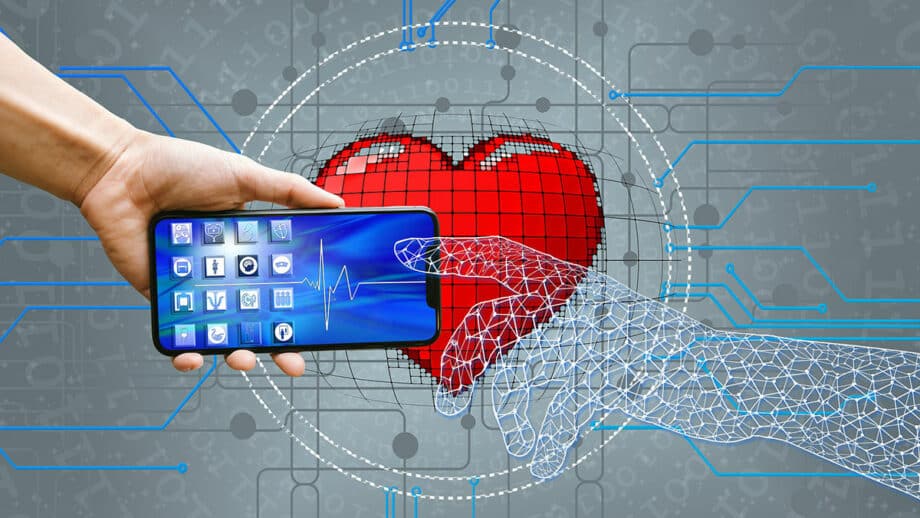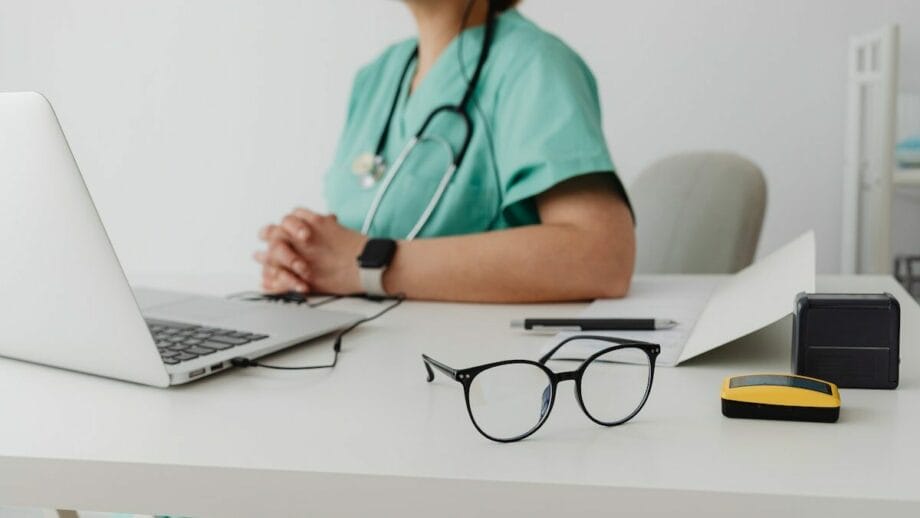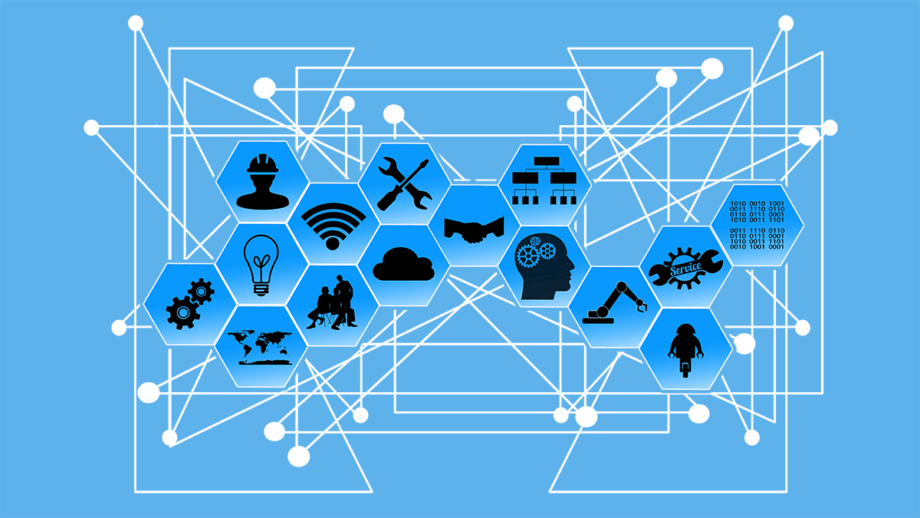In the world today, new technology in healthcare helps doctors and nurses do their jobs better. But as we use more internet-connected devices like heart monitors and blood sugar testers, keeping these devices safe from hackers becomes very important.
Imagine a device that checks your health all year round but is at risk of being hacked. This shows why making sure these devices are secure is something everyone in healthcare thinks about seriously.
Our writing will guide you through how to keep medical devices that use the Internet of Things (IoT) safe. You will learn about the risks they face and the steps to take to protect them and patient information.
Stay tuned for insights into creating a safer digital environment for vital healthcare tools.
The Rise of IoT in Healthcare

The Internet of Medical Things (IoMT) market is booming, expected to hit $814.28 billion by 2032. This growth has revolutionized how healthcare professionals monitor patients’ health.
Remote patient monitoring devices, which collect health metrics outside traditional settings, are at the forefront of this change. In the U.S., these technologies will support 70.6 million users by 2025, marking a significant shift in patient care management.
Devices like IoT glucose monitors and heart rate sensors offer continuous tracking of vital signs, greatly enhancing diabetes management and cardiac care. Furthermore, connected inhalers provide real-time data on asthma conditions, improving responses to triggers and usage patterns.
This advancement enables mobility for patients and more precise data for healthcare providers, signaling a new era in medical treatment efficiency and safety.
Medical Device IoT Security Risks in This Field
IoT shortcomings in healthcare arise from several issues such as obsolete software, inadequate encryption, and design flaws. Medical device IoT often doesn’t have the required protections to ward off current cyber threats because many gadgets weren’t developed considering cybersecurity.
Particularly vulnerable are older equipment operating on obsolete systems that no longer get security upgrades, leaving them susceptible to cybercriminal attacks.
Cybersecurity difficulties for IoT devices include restrained storage and processing capabilities, making it challenging to apply robust encryption or other safety measures. These constraints invite hackers to exploit the vulnerabilities, possibly gaining access to confidential data or hijacking control of the devices.
It’s vital for healthcare providers to grasp that protecting these devices isn’t solely about securing each individual piece of gear but ensuring the security of the entire network they function within.
An attack on a single gadget can proliferate throughout an interconnected system, potentially causing major disruptions in medical settings where dependability is essential.
“A malfunctioning or inaccessible device due to a cybersecurity breach could result not solely in operational disruptions but also harmful and detrimental consequences for patients.”NCBI
Common Healthcare IoT Security Risks
The primary threats that medical device IoT security confronts are things you should be cognizant of. Here are a few significant perils.
- Data breaches: Patient safety can be compromised when cyber attackers infiltrate IoT devices carrying delicate health information, which can lead to patient data exposure. These incidents place personal data in jeopardy but also potentially leave hospitals susceptible to cybercriminals demanding ransoms, which can lead to substantial financial and reputational harm.
- Device tampering: Contemplate a scenario in which someone breaches a life-supporting device such as a pacemaker or an insulin pump. They could modify its functions or disable it completely, creating severe risks to patients’ lives. This form of medjacking signifies a direct threat to patient health and illustrates the pressing necessity for secure medical devices.
- Ransomware attacks: Lately, there’s been a noticeable influx in ransomware targeting the healthcare sector, locking access to vital systems and devices unless a ransom is disbursed. Such attacks significantly hinder patient care services, with hospitals becoming prime targets for these financially motivated crimes.
- DoS (denial-of-service) attacks: These instances overwhelm systems or devices with traffic, rendering them unreachable or non-functional. In healthcare settings, this could imply essential monitoring or treatment machinery going offline unexpectedly—a situation that could defer critical patient treatments.
Realizing these dangers highlights the importance of having strong defenses ready to successfully handle these risks.

Best Practices for Medical IoT Security
“Security breaches could happen through ignorance, negligence, or ill intent. In case your organization falls victim to a hacker attack through a vulnerability in a connected device, several parties could be held accountable: your staff, cloud service providers, patients, or regulatory bodies failing to pay closer attention to a potential problem. A preventive approach, however, works best on an organizational level.”Empeek experts
To keep medical devices safe, experts suggest using strong passwords and checking who can access the system. They also stress the importance of keeping software up to date with security patches.
Enhancing Access Control and Authentication
Strong access control and authentication are key to keeping medical device IoT security tight. Technologies like OAuth, Decentralized Identifiers (DIDs), and Verifiable Credentials (VCs) play a big role here.
They help make sure that only the right people can get into the system. OAuth lets applications use your data without giving away your password. DIDs and VCs let people prove who they are without risking their private information.
Using these tools means hospitals can trust the data in their digital systems more. This is crucial for protecting against cyberattacks and ensuring patient data stays safe.
“Strengthening access controls with advanced technologies ensures our healthcare IoT devices remain secure against unauthorized attempts, bolstering both patient safety and data integrity.”ResearchGate
Update Software Regularly and Manage Patches
Regular updates are crucial for the safety of IoT devices in healthcare. They patch security holes and introduce new features that keep devices secure. Here is how healthcare organizations can manage these updates:
- Schedule regular software updates to ensure all medical devices run the latest versions. This reduces the risk of cyberattacks.
- Use automatic over-the-air (OTA) updates when available. These allow manufacturers to send updates directly to devices, fixing vulnerabilities quickly.
- Check for firmware updates often. Secure the download source and ensure a safe installation process to protect device integrity.
- Apply patches promptly after the discovery of security vulnerabilities. Waiting too long increases the risk of cyber threats exploiting these weaknesses.
- Train staff on the importance of regular updates. Forty percent of consumers ignore updates, so education can prevent this neglect in a professional setting.
- Implement a system to track and verify that all devices receive necessary updates and patches throughout their product life cycle.
- Use penetration testing to identify potential cybersecurity risks before they become issues. This helps ensure that software defenses stay strong against attacks.
- Employ antivirus and antimalware solutions as an added layer of protection against threats that might bypass initial security measures.
- Encourage manufacturers to provide detailed software bills of materials (SBOMs). These documents list components used in their software, helping healthcare organizations assess vulnerability risks more accurately.
- Embrace zero-trust security practices, never assuming internal networks are safe from threats, thus applying strict access controls even within trusted environments.
Following these steps will help healthcare providers maintain high levels of data privacy and network security, protecting both patients’ sensitive data and the reliability of medical equipment like MRI machines and pacemakers from cybersecurity threats.

Data Encryption
Data encryption turns plain text into a secret code. This method protects patient health records by keeping the data safe from hackers. The Whale-based Attribute Encryption Scheme, or WbAES, is one good example of this in action.
It uses both asymmetric key encryption and whale optimization to secure data transmission efficiently. With WbAES, medical organizations can achieve 99.85% accuracy in securing data while also cutting down on the time it takes to encrypt information.
WbAES works through a two-step security process that includes checking who is trying to access the information and then using attribute-based encryption to keep the data secure. This means even if someone unauthorized gets through the first check, they still cannot read or change any patient information without going through another layer of security.
By implementing strategies like WbAES, healthcare providers can significantly reduce vulnerability points in their network infrastructure and ensure compliance with cybersecurity standards for connected medical devices.
Segmenting a Network
Segmenting a network means creating separate sections within the healthcare system’s IT infrastructure. This process isolates IoT medical devices to protect them from cyber threats.
By doing this, hospitals can monitor and control these devices more effectively. A central part of segmenting is applying a zero-trust approach. Every connection must prove it’s safe before getting access.
This step plays a crucial role in keeping patient data secure.
Setting up network segmentation starts with understanding the hospital’s IT layout well. It helps identify which areas are vulnerable and need more protection. With all IoT devices on their own subnet, an attacker who breaches one device cannot easily harm others or steal sensitive information.
This method significantly reduces risks and improves the security of health data that IoT sensors collect.
Constant Watching and Threat Identification
Teams must always watch IoT healthcare systems closely. They need to find threats quickly. This constant vigilance is a shield against cybercriminals who target these devices often.
The Ambient Intelligence (AMI) Lab framework helps with this by spotting problems early. It makes health data from IoT sensors better and more reliable.
Quick threat identification keeps user trust high in IoT healthcare security. It also makes sure the systems work well overall. Devices handle sensitive info every day, making their safety crucial for everyone involved.
Using machine learning and software updates can fight off malware protection breaches, keeping data safe and secure.
Keeping Hardware Safe from Intrusions
To keep medical devices safe, healthcare organizations focus on strong risk management. They know that a device with weak security can be an easy target for hackers. To fight this, they use electronic digital signatures to verify the integrity of their hardware.
This step makes sure only trusted software runs on the devices. Also, limiting access to diagnostic ports helps prevent unauthorized use.
Real-time monitoring plays a big role too. It watches for unusual activity that might mean a breach has happened. With these measures, healthcare providers can tackle cybersecurity vulnerabilities head-on.
They address risks to both patient data and device functionality before issues arise.
Regulatory Organizations’ Function in IoT Security
Regulatory bodies, like the FDA and the European Union, set rules for IoT security in healthcare. These organizations demand that makers of connected medical devices follow strict cybersecurity guidelines.
The FDA asks for a Cybersecurity Bill of Materials (CBOM) from manufacturers. This CBOM must list all hardware and software parts in their products. As part of this requirement, companies also need to provide a Software Bill of Materials (SBOM).
This SBOM details every software component used in their devices.
The goal is to improve safety and ensure patient data protection. For example, compliance with these regulations proves that hospitals use secure technology. It shows patients that their health data is safe from unauthorized access or theft.
Following these rules keeps healthcare providers legally compliant as well. In summary, regulatory agencies play a key role in protecting both patient information and the integrity of IoT technologies within the healthcare industry.
The Future of Medical Device IoT Security
As health tech evolves, the security of internet-connected medical devices faces significant challenges. Cybersecurity plans for new medical products are a must, following guidelines set by the FDA.
These plans should cover both before and after the device hits the market. With data breaches costing millions, protecting patient information becomes crucial. Technologies such as machine learning will play a key role in identifying threats early.
Manufacturers and healthcare providers must work together more than ever to fight cyber threats. Regular updates and patch management will be vital to keep devices safe. The Secure Product Development Framework (SPDF) aims at reducing risks right from the design phase.
It’s all about creating safer environments for patients and securing their highly valuable medical records against identity theft and other cybercrimes.
Conclusion

Understanding how medical device IoT security operates opens up a world where healthcare can be both innovative and safe. Prioritizing security steps like enhancing access control, regularly updating software, encrypting data, and keeping an eye out for threats helps protect patients.
This creates a strong line of defense against data breaches and unauthorized access to sensitive information. By embracing these practices, healthcare providers can offer better care while safeguarding patient privacy.
Let’s commit to making our healthcare environments secure places where medical advancements thrive without compromising on safety or privacy.





